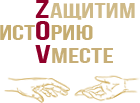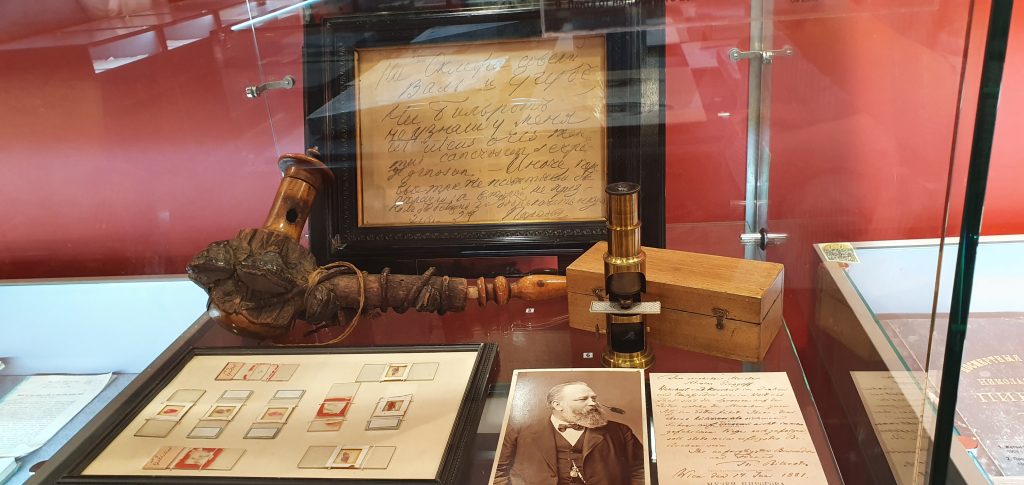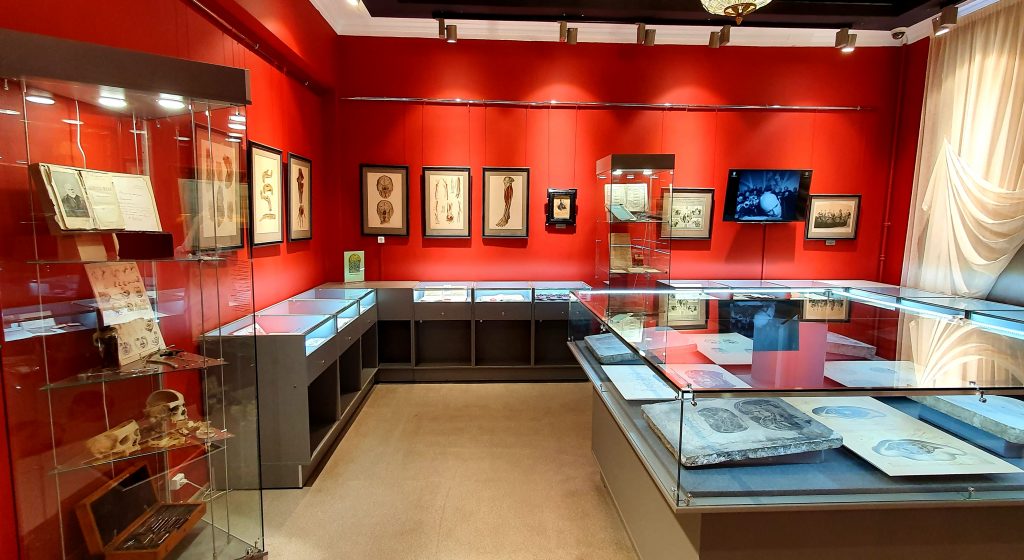The thinker, scientist, selfless worker - he was one of the founders of topographic anatomy and field surgery, a talented teacher and a major public figure. After graduating from Moscow University, Pirogov was sent to the Professor Institute of the University of Dorpat, where in 1932 he defended his thesis on "The ligation of the abdominal aorta" and was awarded the title of Doctor of Medicine.
In 1840 Pirogov was invited to the St. Petersburg Medical-Surgical Academy, where a special clinic has been established - "surgical hospital", where he began to manage.
Petersburg period of the NI Pirogov (1841-1856) went down in a domestic medicine history as a period of his biggest rise of creativity. In 1841, in parallel with his work at the Medical and Surgical Academy, N. I. Pirogov began working at the St. Petersburg Tool Plant with the goal of improving, in his expression, “the external and internal qualities of the instruments”.
The exposition presents various types of surgical instruments and their sets, developed by N.I. Pirogov, which for a long time supplied doctors not only in the Russian army, but also in civilian medical institutions. In 1846, according to the project of N. I. Pirogov, the first Anatomical Institute in Europe was founded at the Medical and Surgical Academy.
The research work of N.I. Pirogov at the Anatomical Institute was extremely diverse and ended with the publication of the atlas "Topographic anatomy of cuts of the human body."
In 1847, N.I. Pirogov went to the Caucasus, to the army. When providing surgical assistance to the wounded during the siege of the village of Salta, he used anesthesia for the first time in the field, and the Seten's starch dressing was used to immobilize fractures.
As a military doctor and surgeon, N.I. Pirogov twice went to the theater of military action during the Crimean War (in 1854 and 1855). There, for the first time in the history of military medicine, he applied a sorting system for the wounded, proposed a “dispersing” system for the wounded, developed the doctrine of a saving treatment method, and much more.
The N.I. Pirogov's classic works such as “The Beginning of General Military Field Surgery”, “Report on visits to military sanitary institutions in Germany, Lorraine and Alsace in 1870” and “Military medicine and private assistance at the theater of war in Bulgaria and in the rear of the army in 1877-1878” comprise the doctrine of the organization of military medicine and field surgery and are presented in the exposition.
Also, numerous congratulatory addresses of N.I. Pirogov, his personal belongings, manuscripts, as well as literature about him are demonstrated. Unique exhibits are the manuscript of the scientist “Posthumous Notes of Nikolai Ivanovich Pirogov” (1879–1881) and his suicide note with a diagnosis of his illness.
In the art collection of the museum, a special place is occupied by the painting of the artist I. E. Repin “The arrival of N. I. Pirogov to Moscow” (1881). This is the last intravital image of the great surgeon. The bust of N.I. Pirogov (sculpture by I.E. Repin), which was made in the last year of the scientist's life, is also presented here.
In Ukraine, in the Vishnya estate near Vinnitsa, in 1947 the Museum-Estate of N.I. Pirogov was opened, where the embalmed body of the great surgeon is located. The museum was created by the staff of the Military Medical Museum and has long been its branch.





